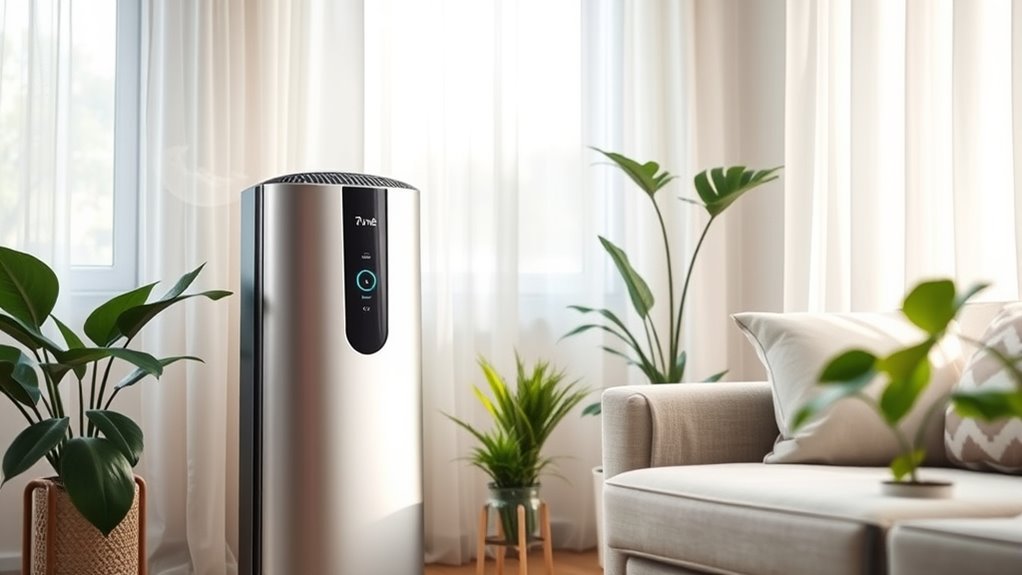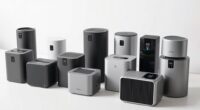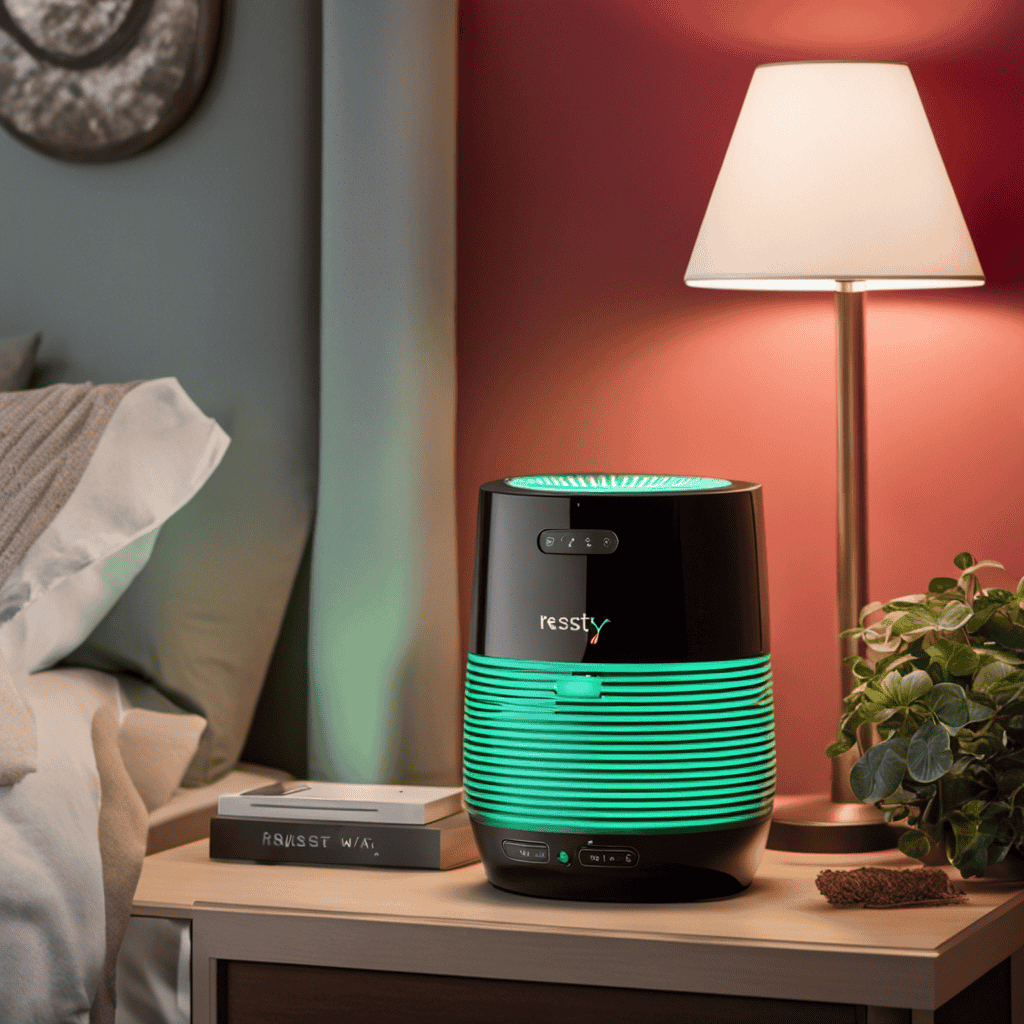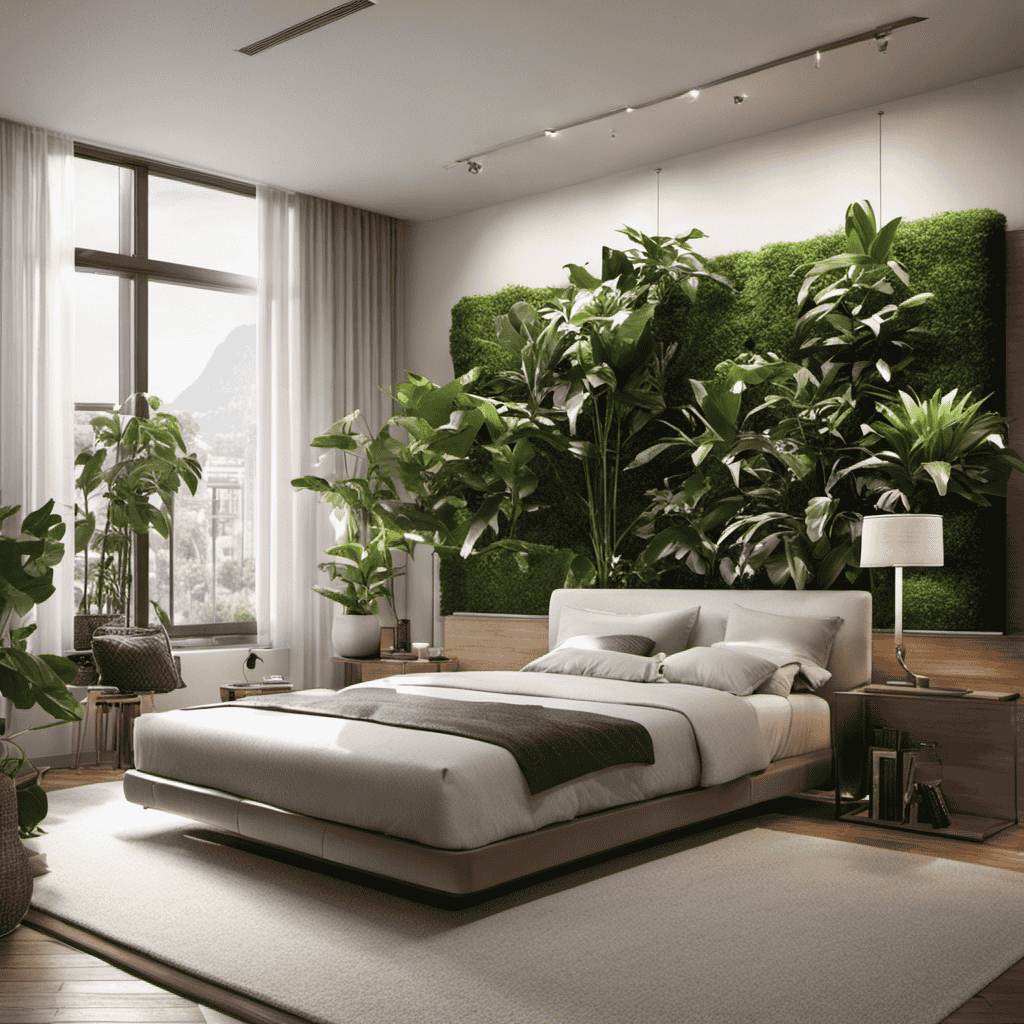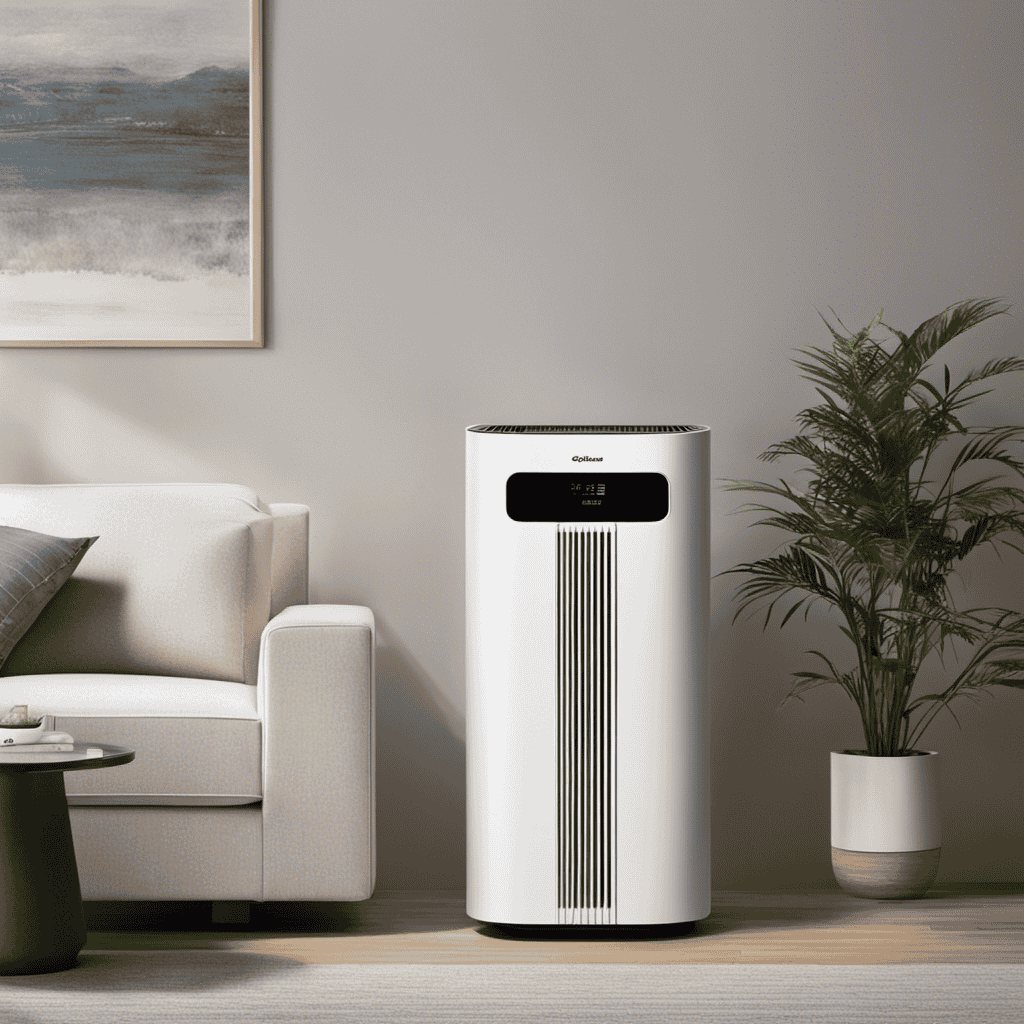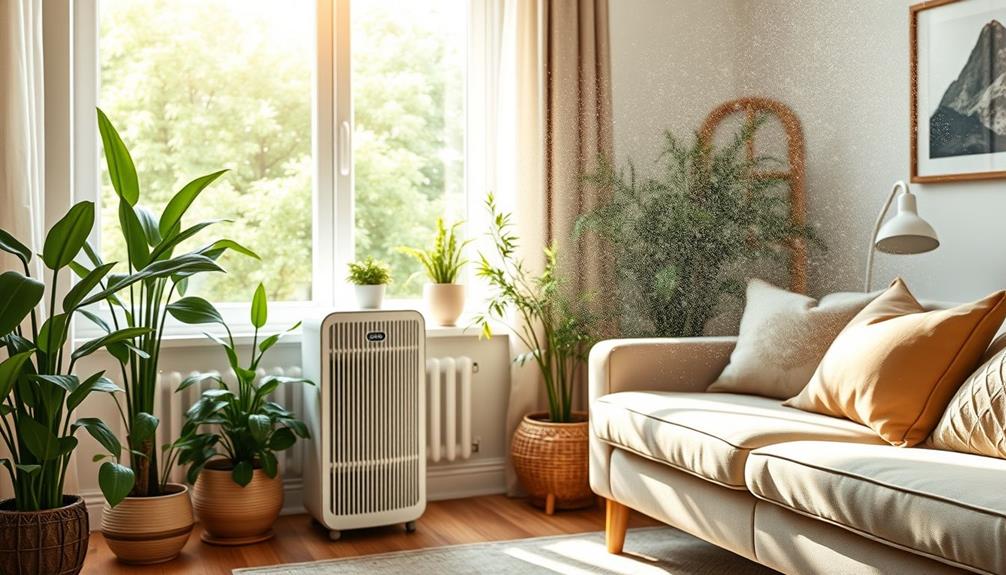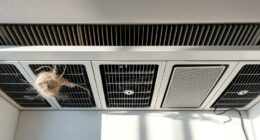Many believe air purifiers remove all pollutants instantly or only work for smoke and allergies, but that’s a myth. They improve air quality, yet have limits, and their effectiveness depends on filter type, room size, and maintenance. Higher prices don’t always mean better performance, and they can’t replace ventilation or kill all germs. Keep an open mind—there’s more to understanding how these devices truly work and how to use them effectively.
Key Takeaways
- Air purifiers improve indoor air but cannot eliminate all pollutants, gases, or viruses instantly.
- Price and brand do not always reflect performance; evaluate filters and reviews instead.
- Proper maintenance is essential for optimal air purifier effectiveness and longevity.
- They reduce airborne germs but do not fully disinfect surfaces or kill all pathogens.
- Effectiveness varies by device power, room size, and filter quality; no purifier is a complete solution.
Air Purifiers Completely Remove All Pollutants
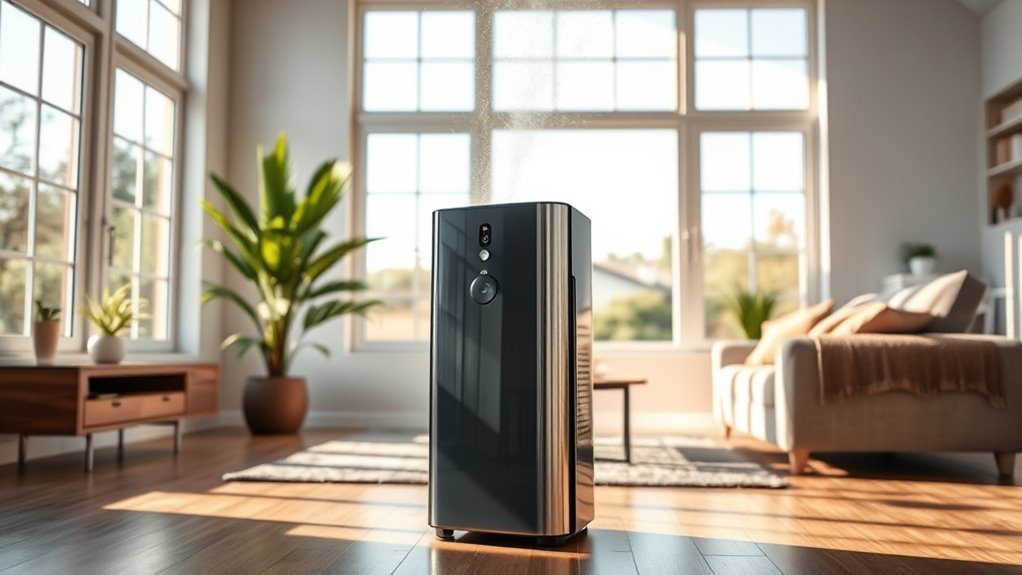
Many people believe that air purifiers can eliminate all pollutants from their environment, but that’s not entirely true. While air purifiers considerably improve air quality, they don’t remove every pollutant. HEPA filters, for example, are excellent at capturing dust, pollen, and pet dander, but they can’t eliminate gases or odors. Activated carbon filters help with chemical vapors, yet they have limits. Particles like viruses or bacteria may also pass through or require specific filters to remove effectively. So, expecting perfect pollutant removal isn’t realistic. Instead, think of air purifiers as tools that reduce airborne contaminants, enhancing your overall air quality. They’re part of a broader approach to maintaining a healthier indoor environment, but they don’t provide complete pollutant elimination on their own. Additionally, understanding indoor air quality can help you identify other effective strategies for a cleaner, healthier space. Incorporating air quality management practices alongside air purifiers can further improve your environment, especially when considering filter maintenance and proper ventilation strategies. Regularly monitoring air quality levels can also help you assess the effectiveness of your purification efforts and make informed adjustments. For example, air filtration technology continues to evolve, offering more specialized options for different pollutants.
Higher Price Means Better Performance

Just because an air purifier costs more doesn’t mean it works better. High prices often come with branding or features that don’t improve performance. You can find effective models at a reasonable price without overspending. Additionally, considering the performance features is more important than the price tag when choosing an air purifier. Remember that a higher price can sometimes include unnecessary additional features that don’t necessarily enhance air quality. Evaluating product reviews can help identify models that deliver on performance without inflated costs. Moreover, understanding consumer reports can provide further insights into the actual efficiency and reliability of various air purifiers, helping you make a more informed decision. Understanding celebrity lifestyle insights can also offer perspective on value and quality in different products.
Cost Doesn’t Guarantee Quality
While it might seem logical that spending more on an air purifier guarantees better performance, this isn’t always the case. Your cost perception often influences the assumption of a quality correlation, but higher prices don’t always mean superior filtration or durability. Many affordable models effectively remove pollutants and allergens, offering excellent value. Brands may charge more for features or branding rather than real performance benefits. Instead of focusing solely on price, evaluate the purifier’s specifications, such as CADR ratings and filter types, to determine its effectiveness. Remember, a higher price tag doesn’t automatically translate into better quality. You can find budget-friendly options that perform just as well as premium models, so don’t judge a device solely based on its cost. Additionally, smart device features like digital displays and safety alerts are becoming common even in more affordable models, enhancing user experience without increasing price. Performance metrics are essential to consider, as they provide quantifiable data on how well an air purifier cleans the air, and understanding the filter maintenance requirements can help ensure long-term effectiveness. Furthermore, a comprehensive evaluation of customer reviews and third-party testing results can help you make a more informed choice. Moreover, understanding the coverage area is crucial to ensure the purifier suits your space and provides optimal air purification.
Premium Models Often Overpriced
Premium air purifiers often come with hefty price tags, leading consumers to assume they deliver superior performance. However, premium pricing doesn’t always mean better results. Manufacturers use marketing tactics to justify higher prices, making you believe advanced features equate to efficiency. In reality, many affordable models perform just as well, especially when they have similar filters and CADR ratings. Don’t be swayed solely by the price tag—look at independent reviews and specifications. High prices can sometimes reflect brand prestige rather than actual performance. Before spending extra, research thoroughly. Remember, a more expensive model isn’t automatically better; smarter choices depend on features, room size, and filtration quality, not just the sticker price. Recognizing Gold IRA scams can help you make more informed purchasing decisions, including evaluating air purifiers. Additionally, understanding filter types and ratings can help you choose a more effective and cost-efficient model for your needs. Being aware of performance standards and how they are tested can also prevent overspending on underperforming units. Moreover, comparing real-world test results from independent sources can provide clearer insights into a model’s actual performance.
They Are Only Useful for Smoke and Allergies
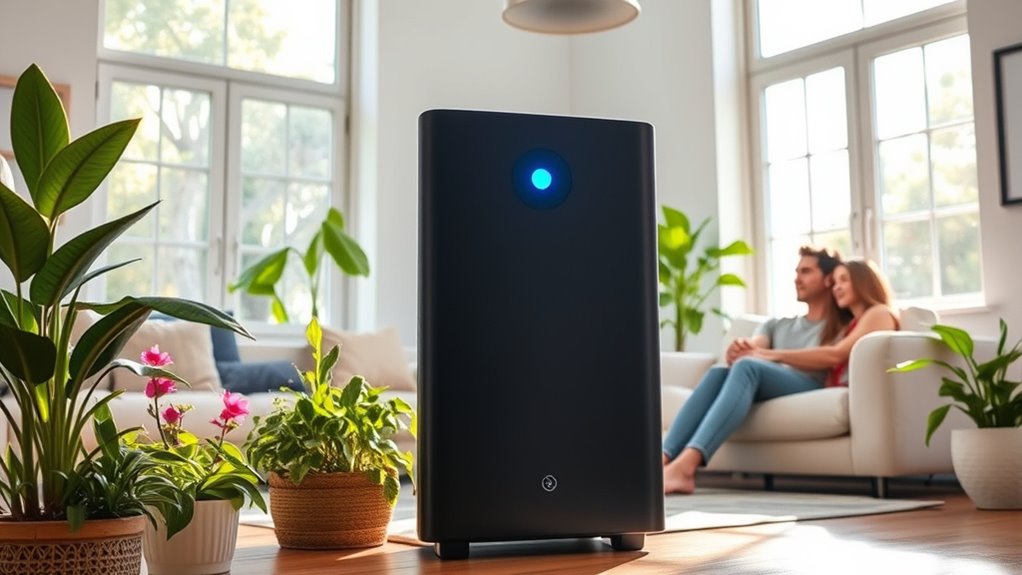
Many people assume air purifiers are only effective against smoke and allergies, but in reality, their benefits reach much further. Improving air quality isn’t just about filtering out visible pollutants; air purifiers also remove dust, pet dander, bacteria, and other airborne particles that can affect your health. This is especially important if you keep indoor plants, which can boost humidity and contribute to mold growth or airborne spores. An air purifier helps maintain a clean environment, reducing the risk of respiratory issues and creating a healthier space overall. It’s not just about allergy relief—air purifiers are a versatile tool for enhancing indoor air quality, making your home safer and more comfortable regardless of whether you’re dealing with smoke or allergies. Proper filtration is essential to ensure all harmful particles are effectively removed from the air, especially since advanced filtration technologies like HEPA filters can capture 99.97% of tiny airborne contaminants. Incorporating AI-driven safety measures can further optimize air quality management by monitoring pollutants in real-time and adjusting filtration as needed. Additionally, ensuring the effectiveness of filters is vital for maintaining optimal air purification performance over time. Proper maintenance practices are also crucial to keep your air purifier functioning at peak efficiency and prolong its lifespan.
Air Purifiers Clean The Air Instantly
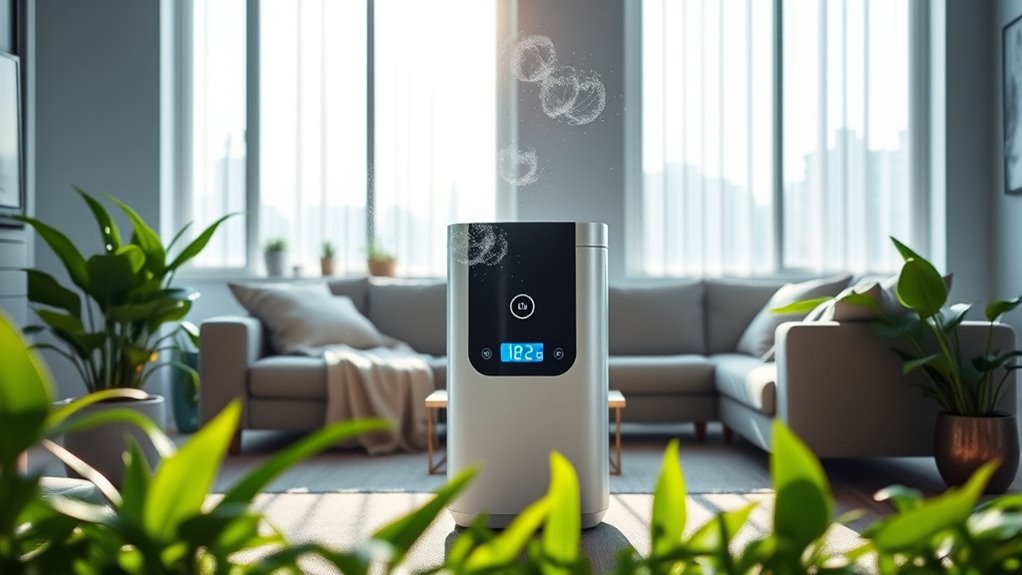
You might think air purifiers instantly improve air quality, but results can vary. They can quickly remove odors and filter out dust, providing near-immediate relief. However, understanding their actual speed helps you set realistic expectations for clean air. Additionally, the effectiveness depends on factors such as the type of filter used and the size of the room, with room coverage size playing a crucial role in overall performance. The presence of air quality indicators in the environment can also influence air quality, either positively or negatively, depending on their use. Regular maintenance and cleaning ensures the filters operate optimally, maintaining the purifier’s ability to deliver quick results.
Immediate Air Quality Improvement
Can air purifiers truly clean the air instantly? While they provide immediate benefits, the idea that they instantly remove all pollutants isn’t entirely accurate. They quickly reduce airborne contaminants, offering noticeable improvements in air quality soon after turning them on. However, the level of pollutant reduction depends on the device’s power and coverage area. To illustrate, consider this comparison:
| Air Purifier Power | Speed of Pollutant Reduction |
|---|---|
| High | Rapid improvement |
| Medium | Moderate improvement |
| Low | Gradual improvement |
| Size & Room | Affects effectiveness |
Instant Odor Removal
Does an air purifier really eliminate odors instantly? Not exactly. While many purifiers claim to offer immediate scent elimination, true odor absorption takes some time. Air purifiers with activated carbon filters are designed to adsorb odors quickly, reducing smells from pets, cooking, or smoke. However, the process isn’t instantaneous; it depends on the size of the room and the strength of the odor. Some models are more effective at scent elimination than others, but no device can instantly wipe out strong odors the moment they appear. Instead, they gradually improve air quality by continuously filtering and absorbing odor particles. So, while you may notice a quick reduction in smell, complete odor removal usually requires consistent use over a short period.
Quick Dust Filtration
Air purifiers are effective tools for quickly improving indoor air quality, especially when it comes to filtering dust particles. Their high filtering efficiency ensures they capture dust effectively, providing instant relief from airborne debris. When you turn on your purifier, it rapidly pulls in air, trapping dust on HEPA filters or other advanced media, leading to noticeable dust removal in a short time. This quick filtration process helps prevent dust buildup on surfaces and reduces lingering allergens. Keep in mind, the speed of dust removal depends on your purifier’s power and filter quality, but many models are designed for rapid results. If you want cleaner, dust-free air instantly, choosing a device with proven filtering efficiency is your best bet.
All Air Purifiers Are Noisy and Disruptive

Many people assume that all air purifiers are loud and disruptive, but this isn’t always the case. Modern models are designed with low noise levels to guarantee they don’t disturb your daily life. Quiet operation is a key feature, especially for bedrooms or offices. Disruption concerns often come from older or cheaper units that lack sound insulation, but newer technologies have minimized noise considerably. Many air purifiers now operate quietly enough to run 24/7 without interfering with conversations, sleep, or work. If noise levels are a concern, look for models labeled “quiet” or “sleep mode,” which prioritize silent operation. Not all purifiers are disruptive; with the right choice, you can enjoy clean air without sacrificing peace and quiet.
HEPA Filters Are the Only Effective Filter Type
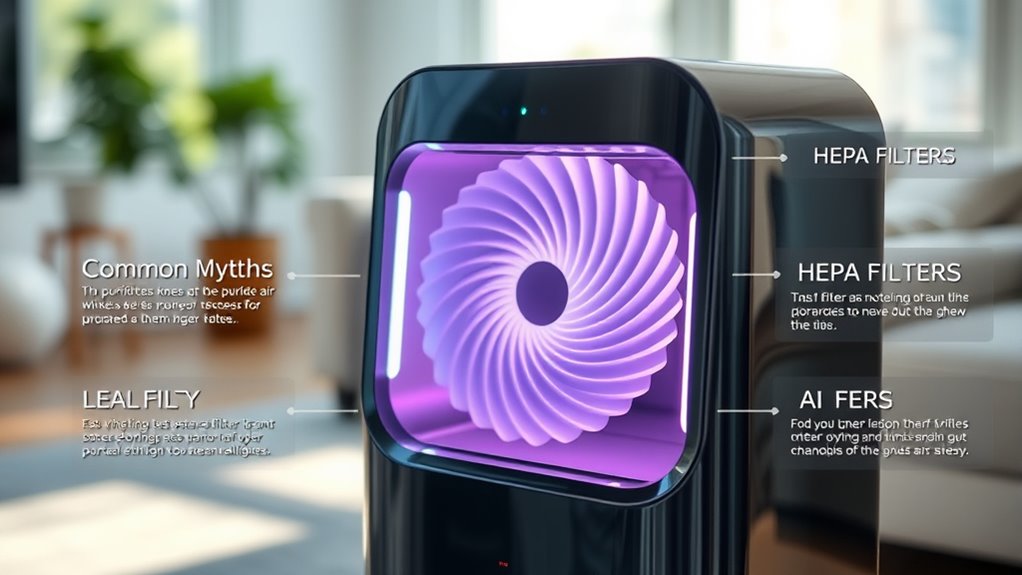
Many believe HEPA filters are the only effective option, but filter types actually vary widely. You’ll find other methods, like activated carbon or UV filters, that also improve air quality. Understanding these options helps you choose the right purifier for your needs.
Filter Types Vary Widely
Although HEPA filters are often hailed as the gold standard, they’re not the only effective option for purifying your air. Different air purifiers use various filter materials, each with unique properties and filter efficiencies. Activated carbon filters excel at removing odors and gases, while electrostatic precipitators attract particles with static electricity. Some filters combine multiple technologies to target a wider range of pollutants. It’s important to deliberate on the specific filter efficiencies for your needs, as not all filters remove the same size particles or contaminants. Relying solely on HEPA filters overlooks the variety of filter types available. By understanding these differences, you can choose an air purifier that best suits your home’s air quality requirements.
Other Effective Filtration Methods
While HEPA filters are highly effective at capturing airborne particles, they are not the only filtration method that can improve your indoor air quality. Activated carbon filters are also valuable, especially for removing odors, gases, and volatile organic compounds (VOCs). Combining HEPA filters with activated carbon creates a thorough filtration system that targets both particles and airborne chemicals. Some air purifiers incorporate both types, providing a more versatile solution. Additionally, other methods like UV light filtration can kill bacteria and viruses, while electrostatic filters attract charged particles. Relying solely on HEPA filters might overlook these benefits, so exploring multiple filtration options can help you create a healthier indoor environment. Remember, effective air purification often involves more than just one filter type.
Air Purifiers Can Replace Ventilation Systems
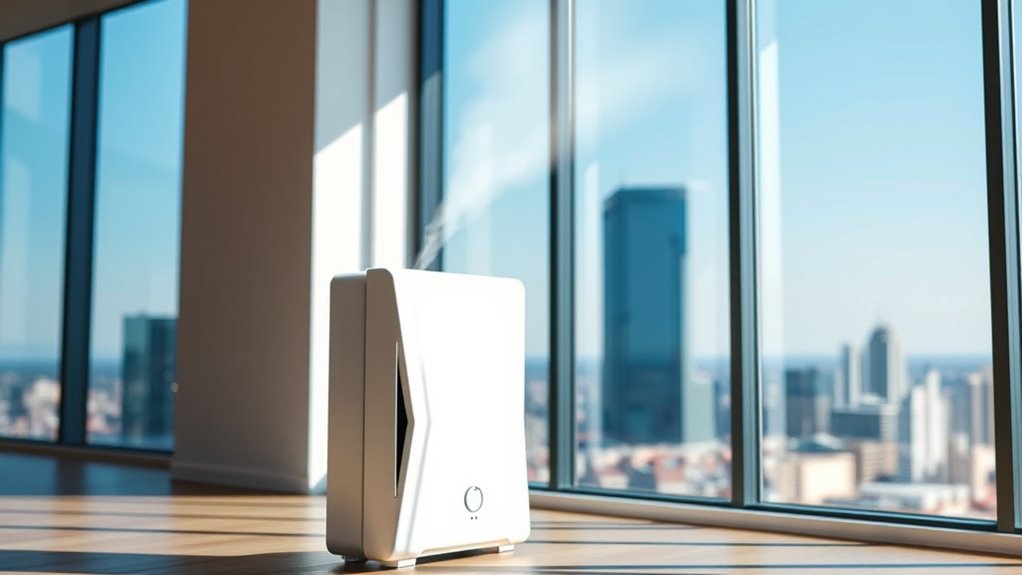
Air purifiers are effective at removing certain airborne pollutants, but they can’t substitute a proper ventilation system. Ventilation alternatives, like air exchange systems, are essential for maintaining fresh air and controlling humidity. Purifiers focus on filtering indoor air, while ventilation systems actively bring in fresh outdoor air and expel contaminated air. Imagine the difference:
| Purifier | Ventilation System |
|---|---|
| Filters pollutants | Introduces fresh air |
| Circulates indoor air | Exhausts stale air |
| Requires filters | Uses vents and fans |
| Effective indoors | Maintains overall air quality |
| Limited to filtration | Ensures ongoing air exchange |
You still need a well-designed air exchange system to properly ventilate your space, as purifiers alone can’t fulfill this role.
They Don’t Require Regular Maintenance
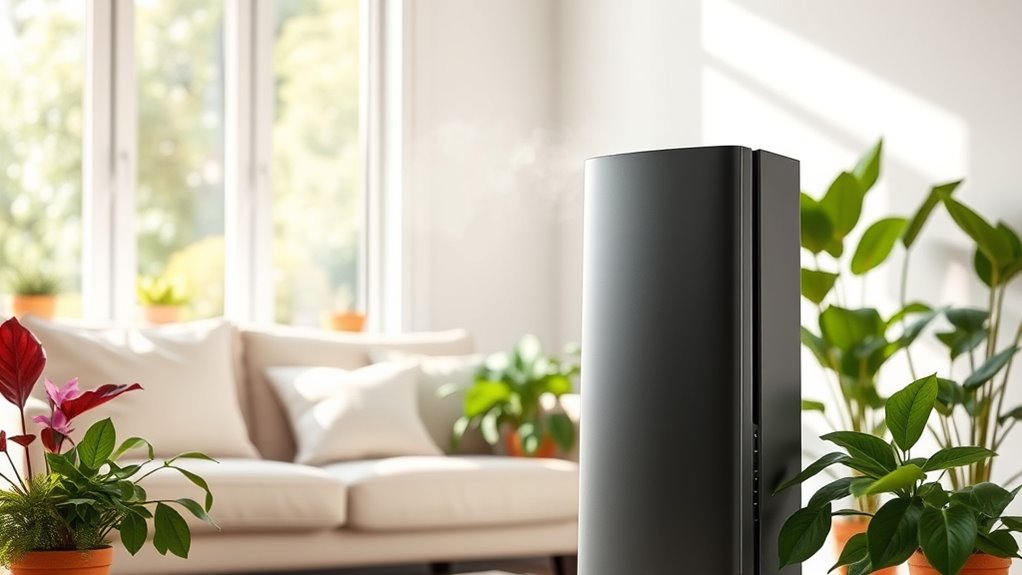
Many people assume that air purifiers require little to no maintenance, but this isn’t true. To keep your purifier working effectively, you need to pay attention to maintenance frequency. Regular filter replacement is essential because clogged or dirty filters reduce efficiency and can even damage the unit. Most air purifiers need filter changes every few months, depending on usage and air quality. Neglecting this can lead to decreased air cleaning performance and increased energy consumption. While some models have indicator lights to signal when filters need changing, it’s wise to establish a routine check. Proper maintenance guarantees your air purifier operates at peak performance and prolongs its lifespan. Remember, skipping maintenance doesn’t just compromise air quality; it can also lead to costly repairs down the line.
Air Purifiers Can Kill All Germs and Viruses
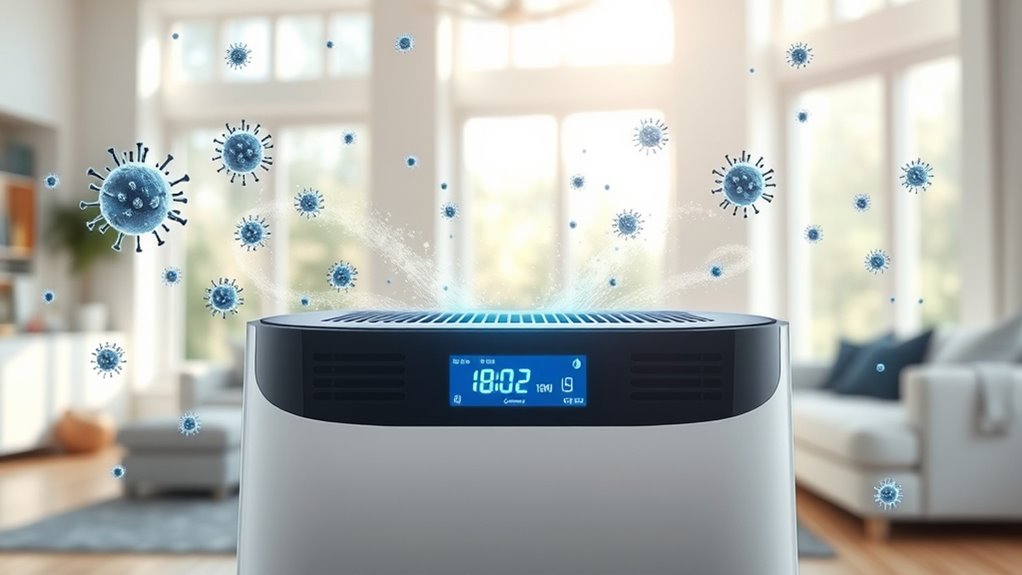
Although air purifiers can reduce the presence of germs and viruses, they do not instantly eliminate all pathogens. Many germ killing myths suggest that air purifiers can completely disinfect your space, but that’s not true. To understand their limits, consider:
- They mainly trap airborne particles, not all germs on surfaces.
- Virus elimination depends on the type of purifier and filter quality.
- Some viruses, like those on surfaces, aren’t affected unless cleaned separately.
- Air purifiers are most effective when used alongside good hygiene practices.
While they help reduce airborne germs, they shouldn’t be solely relied upon for full sterilization. Remember, air purifiers contribute to a healthier environment but don’t kill all germs and viruses on contact.
You Only Need an Air Purifier in the Winter
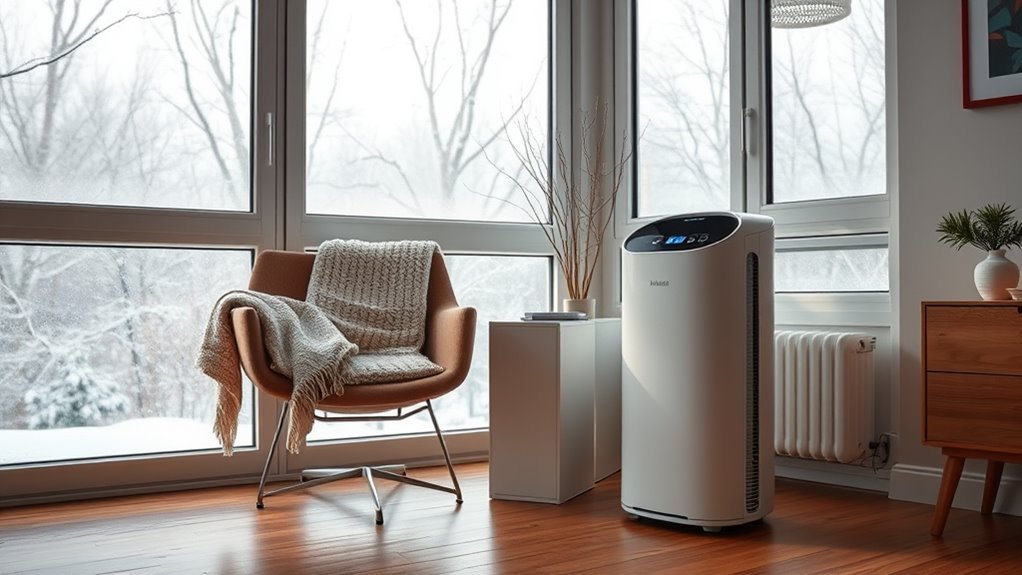
You might think an air purifier is only necessary during the winter months when indoor air tends to feel stale, but that’s a misconception. While seasonal use helps combat winter concerns like dry air and increased indoor pollutants from heating, air purifiers are advantageous year-round. Allergens like pollen, pet dander, and dust can worsen allergies and asthma anytime, not just in winter. Additionally, outdoor pollution can enter your home through open windows or ventilation systems, making air purifiers useful regardless of the season. Relying solely on winter protection overlooks the ongoing need for cleaner air. Investing in an air purifier ensures continuous air quality improvement, helping you breathe easier throughout the year, not just during cold months.
Frequently Asked Questions
Do Air Purifiers Work Equally Well in All Room Sizes?
You might wonder if air purifiers work equally well in all room sizes. The key is matching the purifier capacity to your room size; larger spaces need a unit with higher capacity, while smaller rooms require less. If you choose a purifier that’s too small for your room size, it won’t effectively clean the air. Always check the manufacturer’s recommended room size to ensure peak performance and cleaner air.
Can Air Purifiers Help Reduce Indoor Humidity Levels?
Imagine your home as a delicate dance floor, where air flows smoothly. Air purifiers focus on filtering particles, but they’re not moisture maestros. While they can slightly impact humidity, they don’t replace humidifiers for moisture control. For a balanced environment, consider a humidifier interaction; it actively adds moisture, preventing dryness or mold. So, use an air purifier alongside a humidifier for truly harmonious indoor air quality.
Are Portable Air Purifiers as Effective as Whole-House Systems?
You might wonder if portable air purifiers are as effective as whole-house systems. While portable units offer good portable effectiveness and can improve air quality in specific spaces, they often have limited coverage. Whole-house systems, although more expensive initially, provide thorough purification for your entire home. Consider the cost comparison and your needs to decide whether a portable or whole-house system suits you best.
How Long Does It Take for an Air Purifier to Improve Air Quality?
Think of your air purifier as a skilled chef, quickly whipping up a fresh batch of clean air. Typically, you’ll notice air quality improvement within 30 minutes to a few hours, depending on your room size and purifier efficiency. For the best results, keep doors and windows closed, and allow your purifier time to filter out pollutants and allergens, ensuring you breathe easier faster.
Can Air Purifiers Be Used Outdoors or in Garages?
You can use air purifiers outdoors or in garages, but their effectiveness depends on the environment. For outdoor air quality, portable purifiers with high CADR ratings help reduce pollen, dust, and pollutants, though they’re less effective in open spaces. In garages, air purifiers provide garage air filtration, improving air quality by removing fumes, dust, and odors. Just guarantee the unit is suitable for those conditions and isn’t exposed to excessive moisture or debris.
Conclusion
So, next time you splurge on that fancy air purifier thinking it’s a magic bullet, remember—it’s not going to do the impossible. Despite all the myths, no purifier will instantly banish every pollutant or replace good ventilation. But hey, if you enjoy the idea of spending a fortune for peace of mind, who am I to stop you? Just don’t forget, sometimes a simple window might do more than those high-tech gadgets.
